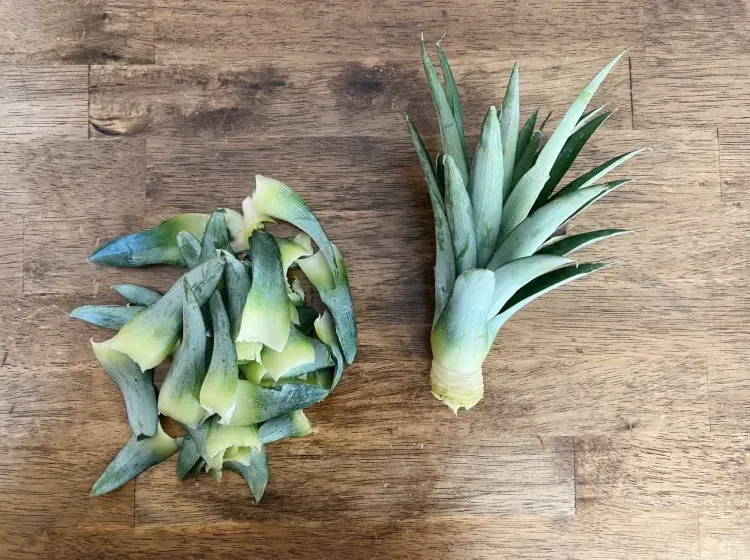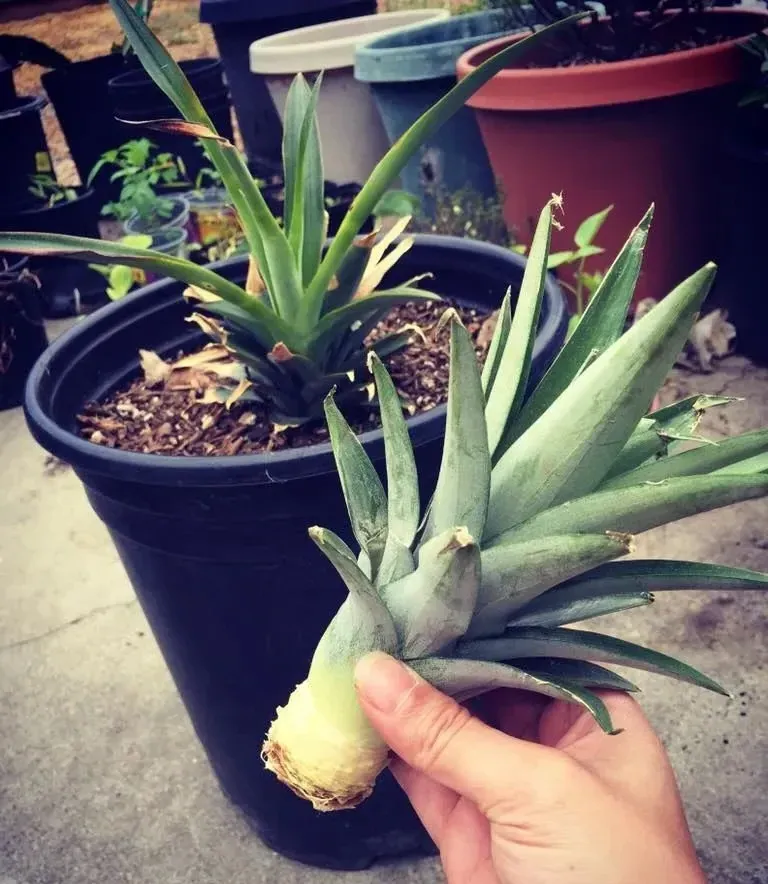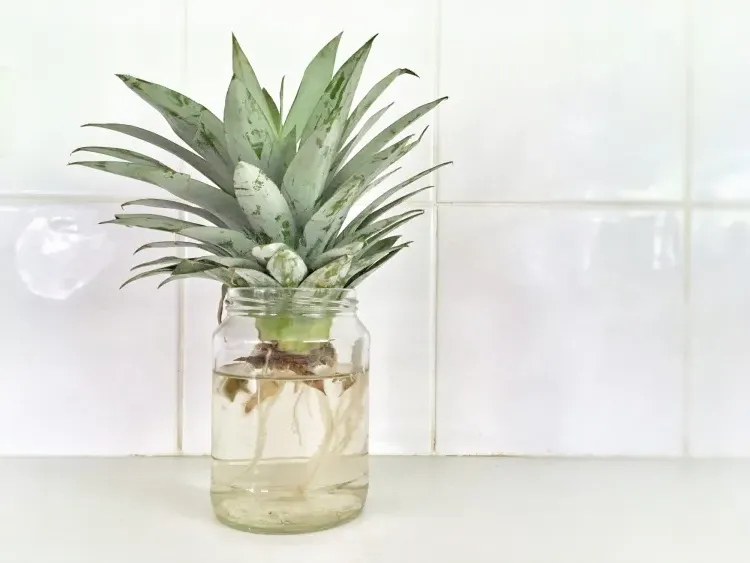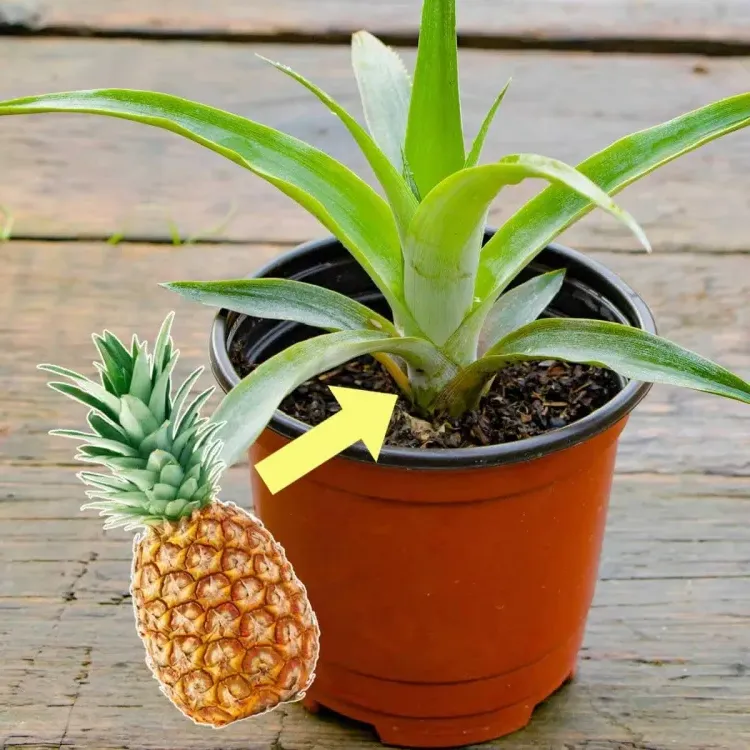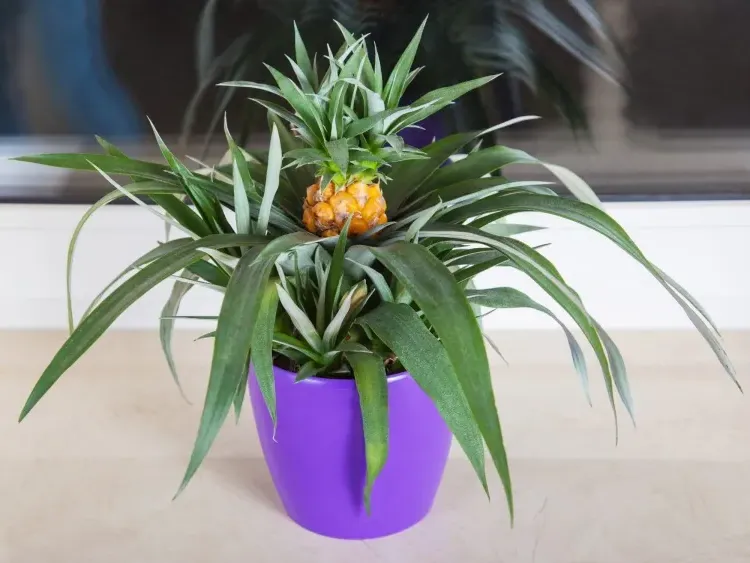Did you know that the leafy tops of store-bought pineapples can be rooted and used as an interesting houseplant? Simply choose a fresh fruit, cut off the leaves and grow a new plant. We give you detailed instructions on how to grow a pineapple at home.
How to grow a pineapple in water?
Tools and Materials you will need:
1. A fresh pineapple: A ripe pineapple should be mostly yellow on the outside, with some brown at the crown where its leaves are. A green pineapple is not ripe enough, while a dark golden yellow or orange may be overripe. Choose a fruit with a skin that is as bright yellow as possible.
2. A 5.5 inches or 7 inches (14 cm or 18 cm) pot: You will need a pot, preferably clay or terracotta, for your pineapple plant. (After a year, you may need to transfer your growing pineapple to a larger pot.)
3. A sharp knife: You can twist the top of the pineapple, but use a sharp knife to trim the edge of the stem and remove any excess fruit before planting.
4. A glass jar: Use a mason jar for the initial rooting phase, which occurs in water.
5. Potting soil: Organic potting mix for succulents or cacti is a good choice, as is any soil with a combination of sand, peat and perlite.
How to grow a pineapple in 8 steps
1. Grab the leaves at the top and twist them to remove the crown or stem. It may help to wear a gardening glove, as pineapple leaves can be sharp.
2. After removing the crown, use a sharp paring knife to remove excess fruit flesh, lower leaves and suckers – the small growths between the leaves.
3. Next, trim the bottom of the stem by making small slices. Look for the root primordia, which appear as a ring of small brown spots. This is where the pineapple roots will emerge from.
4. In fact, drying the stem may take a few days, depending on the humidity. Place the stem in a warm, sunny place with good air circulation. This will allow excess moisture, which can cause rot, to evaporate.
5. Fill a jar with warm water and place the pineapple crown inside, submerging the bottom of the stem. The leaves should prevent it from sinking into the jar. Also, this step is optional for root growth – some growers skip it and plant the pineapple crown directly into the soil.
Growth of pineapple roots
6. After about a week, you should notice small root sprouts emerging from the bottom of the stem. When these roots reach a length of about 4 inches (10 cm) (which may take a few months), it’s time to pot your pineapple. It’s okay if the lower leaves start to turn brown; as long as some of the leaves remain green, your pineapple is doing well.
7. Cover the bottom of the pot with a little soil, then place your pineapple in the pot. Fill in the soil around it so that the crown extends over the top. Place the plant in indirect light for the first few weeks and water it when the soil is dry. Eventually you will see new leaves growing in the center.
8. Once the plant is fully rooted and healthy with new green leaves, you can move it to a location in full sun. Keep the soil moist, but avoid overwatering.
Also read: Plants that can grow in water: 6 indoor plants you can successfully grow in water
How to take care of an indoor pineapple?
Light
Pineapple is a tropical fruit plant, so it needs intense sunlight but not direct because it can burn the leaves and dry out the soil. An outdoor spot near a wall for extra warmth is worth considering. You can also use grow lights if you don’t have natural sunlight available.
Ideal temperature for growing a pineapple at home
Pineapples will die in freezing temperatures. Growth stops below 59.9°F (15.5°C) and above 89°F (32°C). The ideal temperature is therefore in the middle: 70-85°F (20-30°C).
Water
Yes, pineapples are somewhat drought tolerant, but when grown indoors in a container, it’s easy to overdo it. Drought also slows or stops growth. Leaves turn light green, then yellow or red, and curl up when dry.
Excess water is just as bad: yes, regular watering is the key! It is not uncommon for the tips of the leaves to turn brown. If this happens, cut off the brown with clean scissors. If the middle of the plant turns yellow or brown, it is likely that the entire plant is dying.
Fertilizer
As your plant grows, it will need a balanced organic slow release fertilizer (5-5-5 N-P-K) or similar product. Follow the instructions on the product label.


